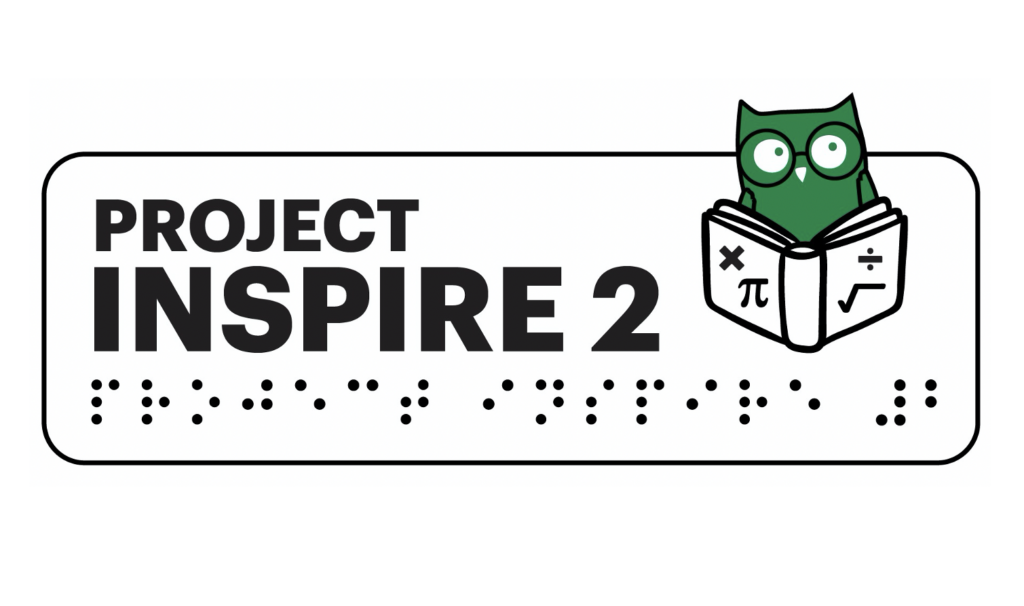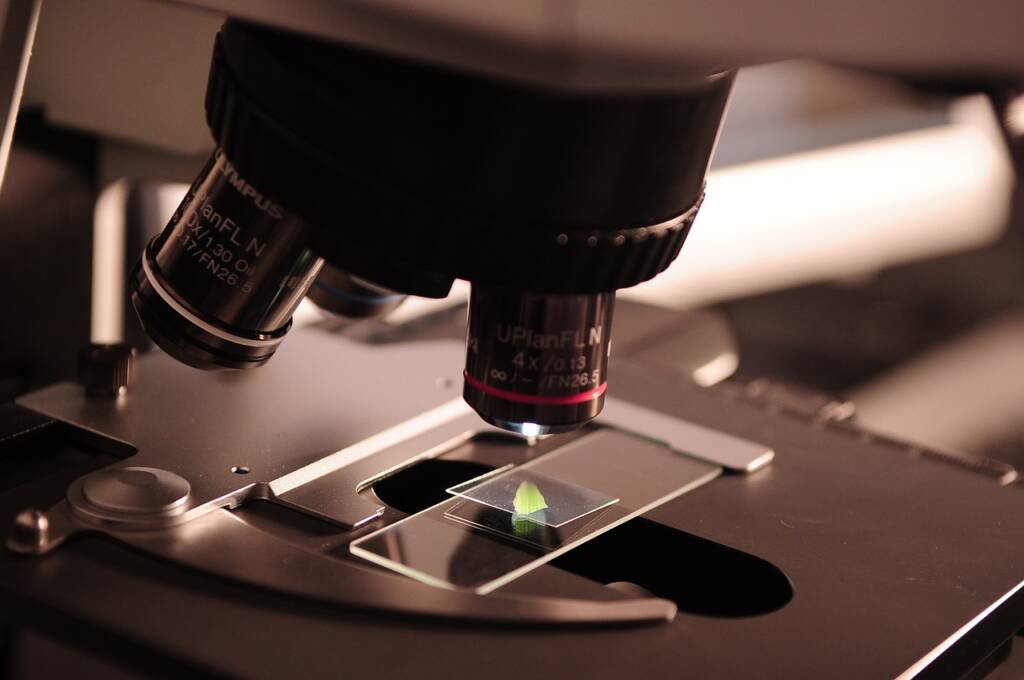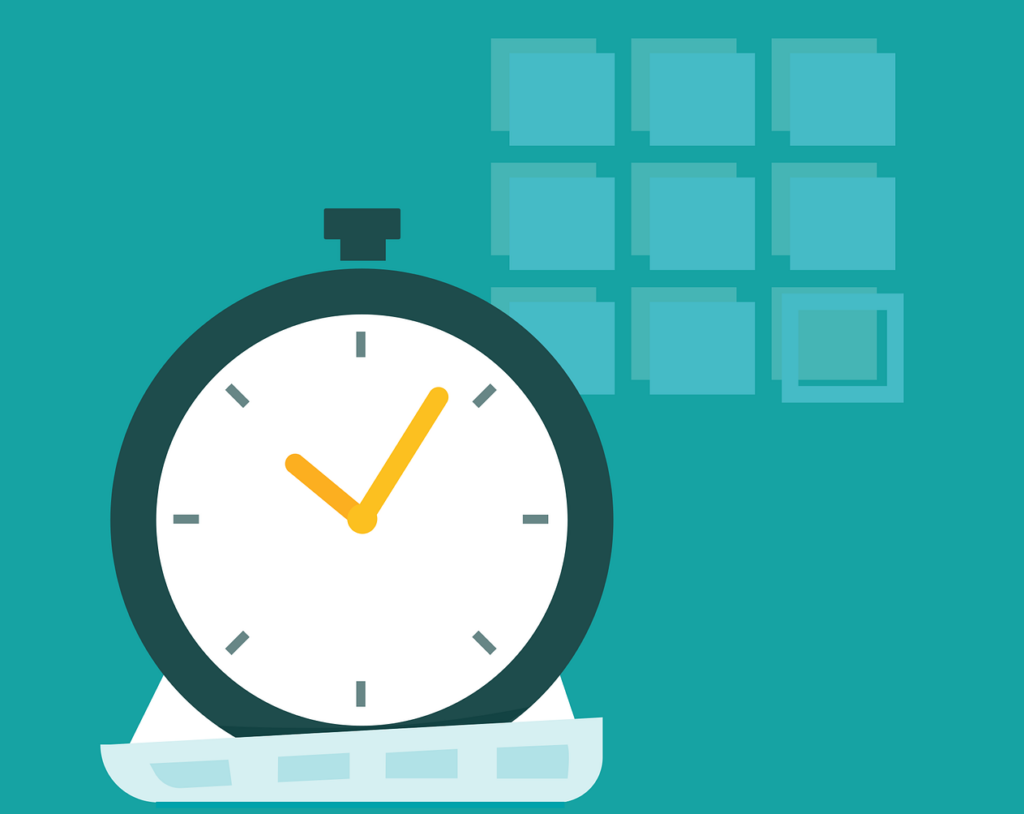By Linda Hagood
Background
Zane’s Background:
Zane is totally blind and quite small for his age of 15, due to Septo Optic Dysplasia. He has recently moved to a self-contained high school class and has little interaction with his classmates during the regular school day, spending most of his time in 1:1 interactions with a paraeducator. He is nonverbal, and does not have an effective communication system in place. Although he has been exposed to tactile symbols, they have been used only receptively, and it is difficult to determine whether he understands them. When I came to work in this classroom as a SLP, he and Lucy were not included in a Monday morning share time activity, in which the other students in his class reported on and answered questions about their weekend family activities. Although the teacher had requested that parents send information and objects to cue conversation about weekend activities, they had not responded. I decided to “give them something to talk about” and started coming in for a session just before the share time to provide a sensory rich activity to report on. I found that the other students were motivated to join us in these activities, which included foot baths, making smoothies and this water balloon activity.
Lucy’s Background:
Lucy is a nonverbal student who also had no conventional communication system. Her attempts to use spoken language were not intelligible to unfamiliar partners, and she has no dedicated communication device available to her. She loves being around people, and uses affect to communicate her feelings. She reportedly “understands everything,” and her paraeducators had become excellent mindreaders, but she had limited topics for communication and little or no opportunities to participate in peer interactions in the classroom. In this video, I used the free iPad App, Sounding board to give her a format for reporting on the water balloon activity.
Goals
- Maintain interactions by performing their own parts in an activity that included peers.
- Indicate preferences or make choices.
- Report on a completed activity to peer or adult partners by showing or sharing objects and actions, or using a communication device.
- Expand topics for interaction or communication to include meaningful hands-on activities.
The Experience
Whose experience is it? Personalizing the Experience Story
In the video which follows, you will see an activity which I facilitated as a speech-language pathologist in Zane’s classroom. Zane, Lucy and Aiden were all students receiving speech therapy services. I wanted to help include Zane and Lucy in the Monday morning “share time” activity, in which the other students in the special education class talked about their weekend activities. Zane and Lucy, as nonverbal students, had not been involved since they had no way to talk about their weekends, and parents were not sending any tangible products to help represent activities. We created a context, which involved play with balloons, as a topic which could be discussed with the larger group. I worked with the more verbal students, Aiden and Kelsey, as well as the others in the class who listened to the stories to help them understand Zane’s need to learn tactually, experientially and auditorilly. I especially targeted use of hand-under-hand guidance and prompting/ guiding with objects as important concepts for the students to use and understand in their interactions with Zane. Objects and iPad overlays using the Sounding Board app were used as forms for reporting on the activity to peers. (See Tech Tip below.)
The Traditional Experience Story
Aidan, Zane, And Lucy Make Water Balloons
The iPad story entitled “Aiden, Zane and Lucy Make Water Balloons” is a traditional experience story, with a focus on the roles that each of the students had in the activity. It is developed from an adult/ teacher perspective to highlight those social aspects of the activity which I wanted Zane and the other students to notice.
 |
We made water balloons.
|
 |
Lucy chose a white balloon.
|
 |
Aiden carried balloons outside.
|
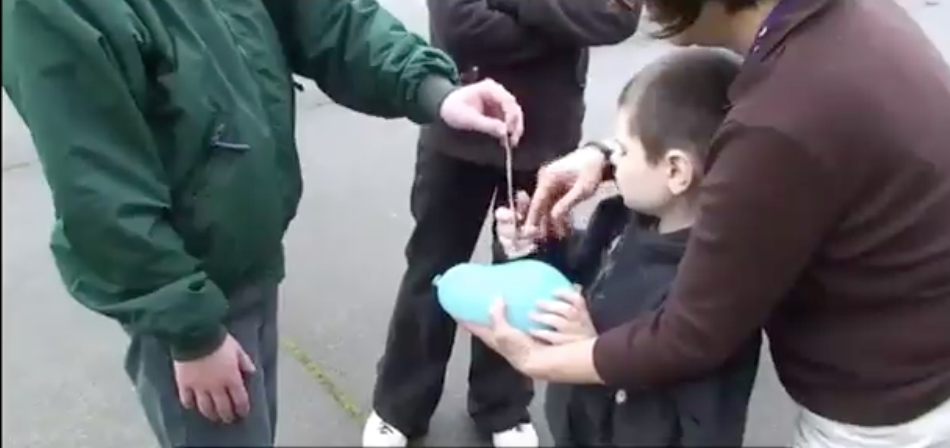 |
Zane poked the balloon with a fork.
|
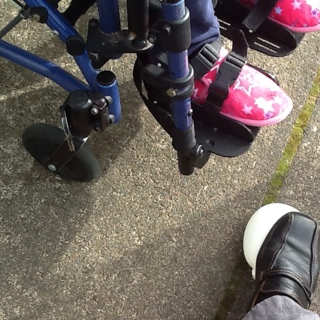 |
Lucy rolled over the balloon. It went “splat”. |
 |
Aidan threw yellow balloon. He showed Zane the broken balloon. |
 |
The class examines a water ballon at the edge of the pavement on the grass. |
The Personalized Experience Story
Balloon Sounds Story
In the following session, I thought about personalizing the story for Zane. I considered his apprehension about the balloons popping and decided to highlight the breaking of balloons, and the sounds which he may learn to notice and associate with the activity, in the following experience story, so that the story would have more meaning for him.
- This is a modification of the balloon story told to highlight aspects of the experience which may be more meaningful to the totally blind student—the sounds of each part of the activity.
- Experience stories can be made more meaningful to a student if the event is described from their perspective, not just used to re-sequence the event in adult terms.
- Compare the two “adult-centric” experience stories above to the balloon sounds story below, modified to make the story more memorable to Zane. He was much more attentive and engaged when reviewing the story below.
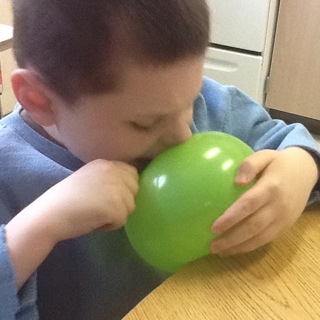 |
Zane squashed the balloon. It sounded like this… |
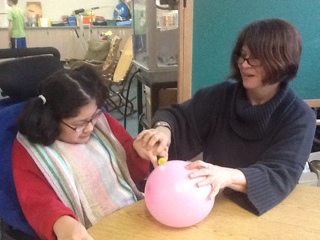 |
Lucy and Linda popped the balloon. And it sounded like this… |
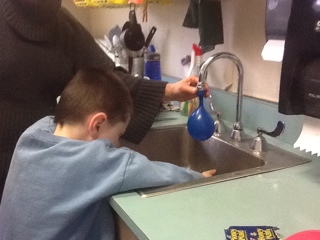 |
Zane filled the balloons with water. |
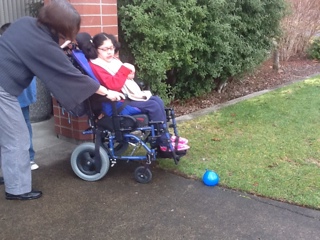 |
Lucy rolled over the balloon and it went SPLAT! |
Tech tip:
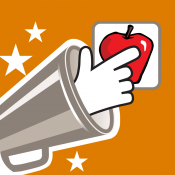 The Sounding Board app on the iPad is a free app which includes auditory scanning, which can be quite helpful with students who are totally blind. The items on a page are scanned using a whisper prompt, and the student presses a switch when he hears the item he wants to select for a verbalization.
The Sounding Board app on the iPad is a free app which includes auditory scanning, which can be quite helpful with students who are totally blind. The items on a page are scanned using a whisper prompt, and the student presses a switch when he hears the item he wants to select for a verbalization.To read more about Collaborative Writing from Linda Hagood, see also Writing CAN be Child’s Play: A Collaborative Writing Program and Writing: The Forgotten Focus for Literacy and Communication Instruction.
Return to Playing with Words homepage.

